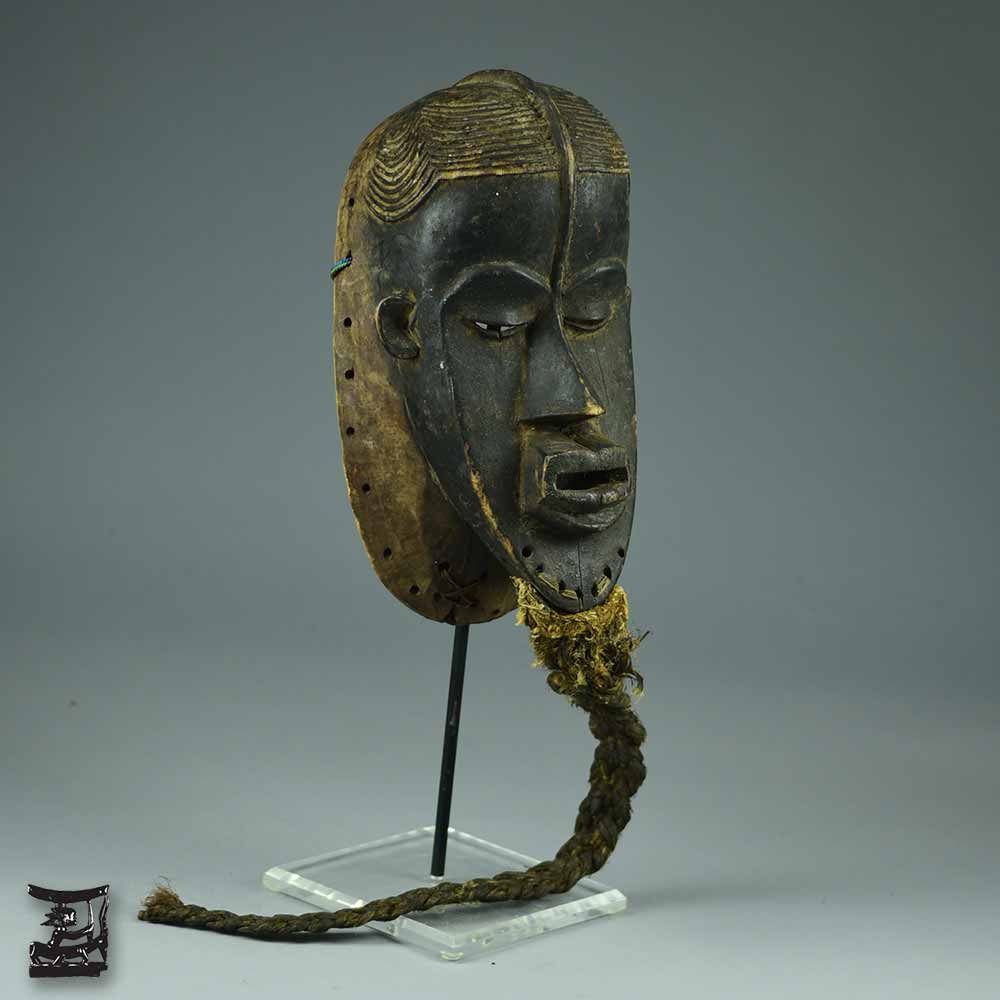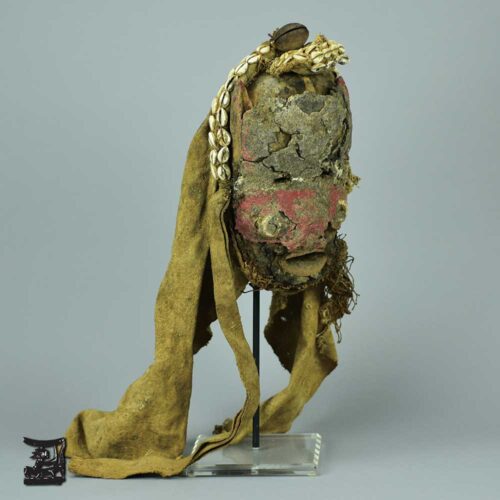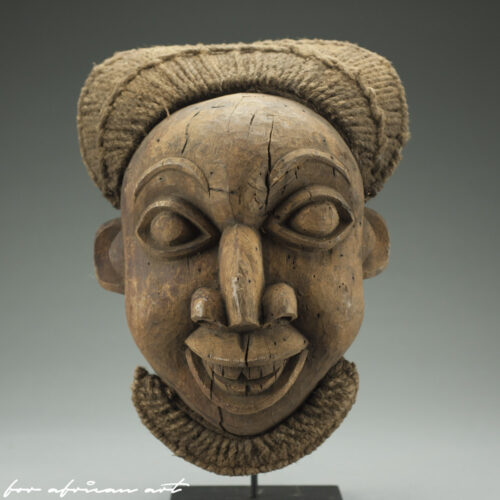Bassa Mask
$329.00
In stock
In stock
Details

ITEM NAME:
Bassa Mask
ITEM #:
55030
ETHNICITY:
Bassa
ORIGIN:
Liberia
MEDIUM:
Wood, Fiber.
DIMENSIONS:
12″ Tall (30.5 cm) / 33″ (83.8cm) with Beard
CONDITION:
Very Good.

PROVENANCE:
Jean Pierre Hallet Estate Collection – Florida, USA.

CATALOGUE NOTE:
The Bassa community’s heart beats along the windswept Liberian coast, where age-old traditions and secret societies dance in the shadows of their forest-draped hinterlands. Steeped in the mystique of masked rituals and societal rites, the Bassa people share deeply rooted cultural affinities with their neighboring Dan and Kpelle groups.
Among the vibrant artifacts of Bassa culture is the Geh-naw mask, a face often poised in serene grace, embodying the gentle persona frequently reflected in traditional feminine movements. The Geh-naw makes its presence felt in moments of profound community significance—ushering young boys back into the fold after their pivotal initiation into the Poro society, marking festive holidays, and paying tribute to esteemed guests. It adorns the face or forehead like a sacred crest, while the body is cloaked in fabric, transforming the wearer into a living emblem of cultural legacy. Occasionally, the mask extends into a wickerwork contraption trailing behind, a silent testament to the intricacy of Bassa artistry.
While the Bassa are interwoven with several secret societies for both women and men, they remain distinct in their decentralized approach to governance. Eschewing a singular paramount leader, they instead rely on the communal strength of groups like the Poro to weave order and harmony through their villages. Agriculture, especially rice cultivation, forms the backbone of their daily survival and social structure.
The Bassa are not just neighbors but kin of the Dan people, having adopted and adapted many facets of Dan culture into their own tapestry, especially in the arts. Though the Bassa primarily express themselves through the language of masks—where even the infrequent statuary forms carry whispers of revered ancestors or pillars of the community. The figures stand as silent tributes to women whose spirits and virtues resonate beyond their mortal lives—reserved, personal, and yet fundamentally interconnected with family legacies.
With a sphere of influence that spans key regions within Liberia—including being the predominant ethnic presence in the bustling urban fabric of Monrovia—the Bassa are a force of unity and cultural richness in a nation of diverse tribes. Beyond the borders of Liberia, one finds echoes of the Bassa heritage reflecting in small communities across Sierra Leone and the Ivory Coast, mirroring the expansiveness of their diaspora.
With approximately 0.57 million individuals identifying as Bassa, they emerge as a significant stratum of Liberia’s demographic landscape, second only to the Kpelle. It is this vibrant blend of culture, art, and society that continues to draw onlookers from across the globe, beckoning art connoisseurs and cultural enthusiasts to peer deeper into the fascinating world of the Bassa people.
The exploration of Bassa culture is an invitation to witness the complexity and beauty of West African heritage. It is within this intricate mosaic that the Bassa contribute their distinctive brushstrokes to the broader narrative of African civilization, revealing patterns of life that are at once unique and emblematic of a shared human experience.










